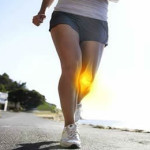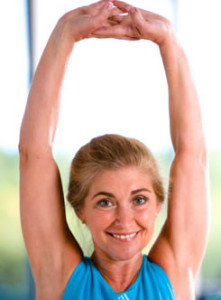How to Treat Rheumatoid Arthritis Naturally at Home?
The major goal of treatment for rheumatoid arthritis (RA) is to help reduce the inflammation, relieve the symptoms (especially pain), protect the joint from further damage, and overall to control the disease. The treatment plan is usually designed in case-by-case basis since the disease can vary from person to person. Along with the prescription medication, the following are some home remedies, lifestyle approaches, or alternative treatments to help treat it naturally!
 Is there any specific diet for rheumatoid arthritis? Some sufferers find that specific foods may worsen or help improve their arthritis. But so far, there is still no specific diet suggested for people with RA.
Is there any specific diet for rheumatoid arthritis? Some sufferers find that specific foods may worsen or help improve their arthritis. But so far, there is still no specific diet suggested for people with RA.
However in general, eating right in a well-balanced diet can help control the disease, though most of the benefits from this approach may not have direct impact on the disease. For instance, diet is essential to keep the weight off. And having healthy weight is important for people with arthritis.
Furthermore, it’s also important to get plenty of calcium, vitamin D, and protein from the diet. Overall, your healthy diet should be balance with variety and moderation.
Some foods may promote more inflammation in the body. And you should restrict these foods since having RA means that your body is more sensitive to any excess inflammation. See more these foods in here!
The following are some FAQs about diet and RA!
Maintaining weight is so critical in RA, why?
Overweight or obesity can worsen arthritis. Even it is one of major risk factors of osteoarthritis (the most common arthritis form). And there is a chance for RA coexists with osteoarthritis, too (see more in here)!
More pounds of excess weight you have will bring more pressure & strain that impact your joint! This can make your joint work harder.
Furthermore, RA itself can be a systemic inflammatory disease. In other words, the inflammation can affect other parts of the body or even cause problems that have nothing to do with joint.
For instance, it could pose the risk of hypertension and heart problem. And obesity can make these risks even worse. It can impair your mobility and be bad for your overall health, too.
Are nightshade vegetables bad for arthritis?
There is opinion that eating nightshade vegies such as peppers, eggplant, or white potatoes may worsen or trigger the flare-up of arthritis. But in fact, this issue is not scientifically confirmed yet.
What you should do? If you find that these veggies do have bad impact on your RA, it is not bad idea to restrict them in your diet.
How to eat eggs safely?
It is thought that people with RA is more vulnerable to have high blood cholesterol and high blood pressure, increasing the risk of cardiovascular disease. For this reason, you need to pay attention on foods that can quickly raise your cholesterol & blood pressure!
Eggs are high in protein, however they contain some cholesterol, too – especially in the egg yolk (egg white is free of cholesterol). According to AHA, eating not more than one whole egg a day is considered safe.
But when your cholesterol is high, your consumption of whole eggs should be not more than 4 whole eggs per week or ask your physician for more advice! Another idea, you can skip the yolk so thus you can eat more eggs – but remember, eat anything in moderation!
How about chocolate? Can it worsen the pain?
Sometime chocolate is considered bad for arthritis pain, is it true? Like in nightshade vegies, this issue is also not scientifically confirmed yet. There is no strong evidence to confirm this link.
However if you find that eating chocolate may trigger or worsen your arthritis symptoms, you may need to restrict it!
Either cold or heat treatment can help cope with pain and stiffness of arthritis. However, it’s also important to do this treatment properly.
Key points before and after treatment
Before the treatment, just make sure that the skin around the joint is healthy and dry. Furthermore, if necessary put extra padding over the area. This can help reduce the risk of skin freezing /burning.
And after the treatment, here are some checklists you need to remember:
- Re-check the area where you apply heat or cold treatment for any discoloration or swelling!
- Then carefully and gently dry the area!
- To prevent stiffness, gently move the joint!
- And if you want to take another treatment, first make sure to allow the skin return to its normal temperature before applying another one!
‘Don’t & do’ checklists
Things you need to avoid:
- Don’t take either cold or hot therapy for open cuts /sores!
- The treatment (especially for cold treatment) is commonly not recommended for person with vasculitis (poor circulation).
- If you want to use hot therapy by taking hot shower, don’t go with too hot water. This may cause skin burning, fatigue, or dizziness.
- While taking a cold /hot treatment, avoid applying any lotion /cream on the area around the affected joint.
- Avoid applying too cold /too hot – always make sure it is safe for your skin!
Things you need to do:
- Go with safe duration when applying each treatment! For instance, limit the treatment for only about 15 minutes at a time! Again, your skin should return to its normal temperature before applying another session of treatment!
- Put any safety barrier such as towel, put it over the skin! Never apply an ice pack directly on the skin, wrap it in the wet cloth to prevent skin freezing!
- Certain parts of the body have more sensitive skin. For sensitive skin, use milder temperature! Additionally, children also have more sensitive skin than adults.
- If you use a special device either for heat or cold therapy, follow the instructions properly!
When you have painful joint, you tend to say ‘no’ for exercise or any physical activity that involves the use of the affected joint. This is normal, and rest at home can be one of the best ways for recovery.
But much inactivity can be counterproductive, too! Even during flare-up, you should still do gentle exercise to maintain the movement and flexibility of the joint!
In other words, while rest is also essential for recovery, but it’s much better to keep active as much as you could (even though when the disease is flaring)! And when the disease is inactive, you can gradually increase the intensity of your exercise!
Some studies found that sufferers with too much bed rest are more likely to recover more slowly. So again, bed rest is important during flare-up but don’t go with it too much!
When your body is ready for exercise, it’s important to keep active with regular exercise!
Having joint disease such as RA doesn’t mean you can stop exercising. Instead, regular exercise brings lots of benefits to help control the disease and ease the symptoms.
With healthy and balanced diet, your exercise can play a key role to maintain your weight and keep it off. And as mentioned before, it’s so important for people with arthritis to have healthy weight.
The following other facts and benefits of exercise for people with RA:
- It is great to maintain and improve the muscle strength around the joint. And strong muscles are required to provide good support every time you move your joints.
- It’s good to maintain your bone strength, too.
- It can help improve your mobility and living skills such as just for standing, walking, and so on.
- It is helpful to cope with some psychological problems. People with chronic disease such as RA are vulnerable to have stress and depression. And with exercise, you can reduce this risk!
- It can be a natural pain reliever. In other words, it is actually also helpful to ease overall pain from your RA.
- And eventually, it can be one of the healthiest approaches to boost your overall health and live longer!
Stretching exercises
They are also called as range-of-motion exercise. If you have RA, these exercises are intended to safely train and stretch your joint as far as you could.
 Stretching exercises are simple – even you may not realize that you get used with them in your daily routines. For instance, stretching both of your arms when you wake up in the morning!
Stretching exercises are simple – even you may not realize that you get used with them in your daily routines. For instance, stretching both of your arms when you wake up in the morning!
Unfortunately, most people never take their joints through the full range of motion in their daily activities, even though when they think that they are an active individual. Over time, this could tight the structures around the joints (such as tendons and ligaments), causing uncomfortable or painful joint.
How to do stretching exercise? Move your joint in range-of-movement as far as you could. Do it carefully until you have a stretch in the muscles of your joints.
Hold it for 5-10 seconds, then release and relax! Repeat the movement for about 5-10 times. Remember to not ‘bounce’ your joint during exercise!
Even when the disease is flaring, you should still do stretching exercise, but do it gently with a fewer repetitions!
Strengthening exercises
As the name implies, these exercises are intended to help strengthen the muscles around the joint. Typically, this uses resistance (weight). However, it can be without resistance, too.
Since the affected joint by RA can be weak, it’s much better to do strengthening exercises with a professional trainer. Start the exercise slowly! Even you may need to do it without weights at first.
Unlike in stretching exercise, strengthening exercise is not recommended when your joint is swollen and hot (during flare-up). Just make sure that your joint is ready for these exercises!
General fitness exercises
They are intended to help keep and improve your overall fit status. This includes some aerobic exercises (such as cycling), water exercises (such as swimming), or even can be as simple as walking.
In general, general fitness exercises that have low impact on the joints are considered safe for people with arthritis. While there are some safe exercises for arthritis, this means that not all kinds of exercises are safe.
For instance, for most people jogging is healthy exercise. It is simple and practical – but not for those with arthritis, because it can significantly jar the joints! Another bad exercise for RA is heavy weight lifting! But if you want to try these exercises, talk to your doctor first!
RA is not only associated with physical symptoms. It could pose the risk of some psychological problems, too – such as stress and depression. And poorly-controlled stress and depression can worsen the disease, causing vicious cycle.
Unluckily in fact, it is not always easy to relax when you have pain. Therefore, you may need to train yourself how to calm, relax, and control both your body & mind!
Some relaxation therapies can help relieve stress naturally. They are also helpful to cope with depression and other psychological problems.
The best time to practice relaxation therapies is when the pain is not too painful. Once your pain becomes too intense, it could be more difficult to practice any relaxation therapy.
There are several forms of relaxation therapies – see more in this section!
First, you need to completely understand that most of herbs and supplements for RA are not scientifically proved yet. Therefore, always talk to your physician first before taking them!
The following are some supplements or herbs that might help treat RA:



